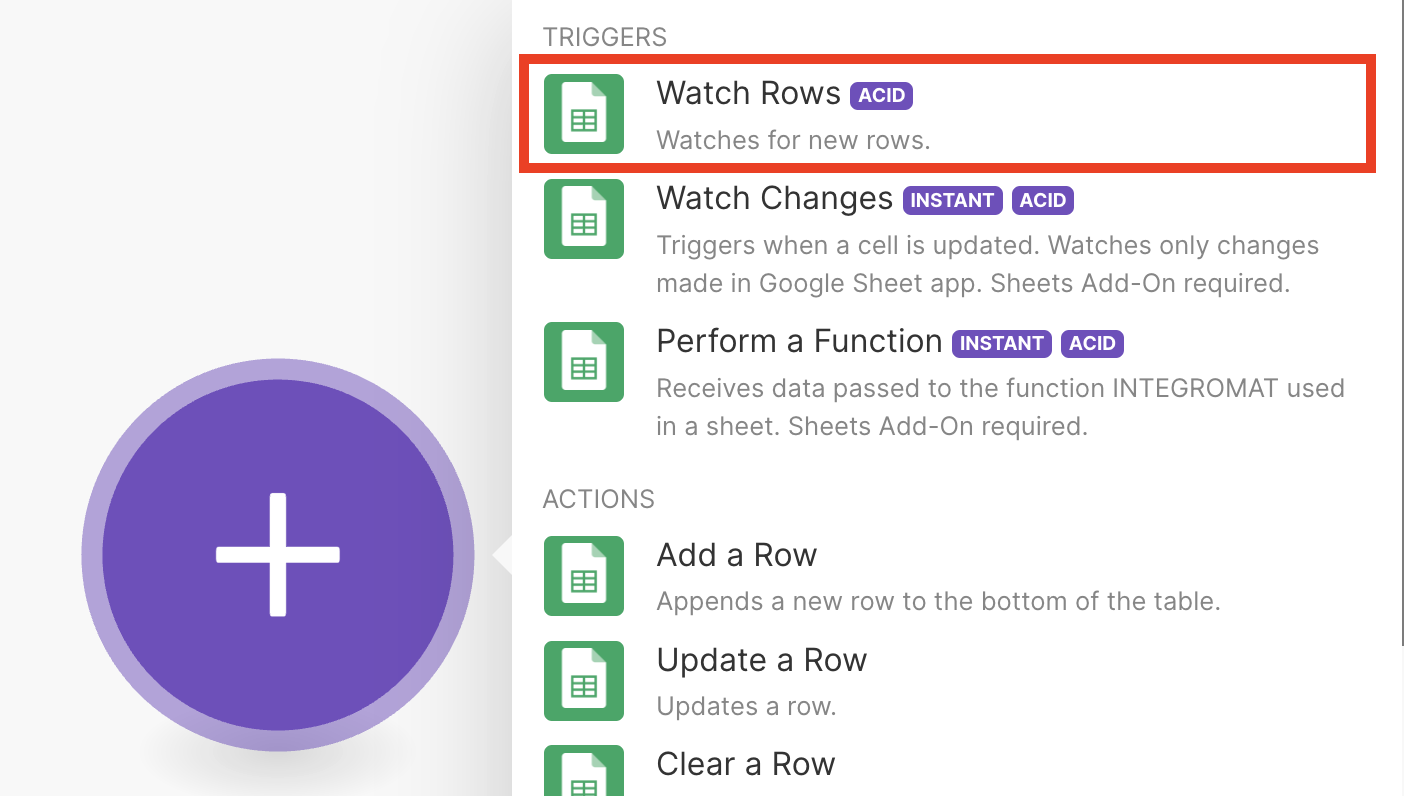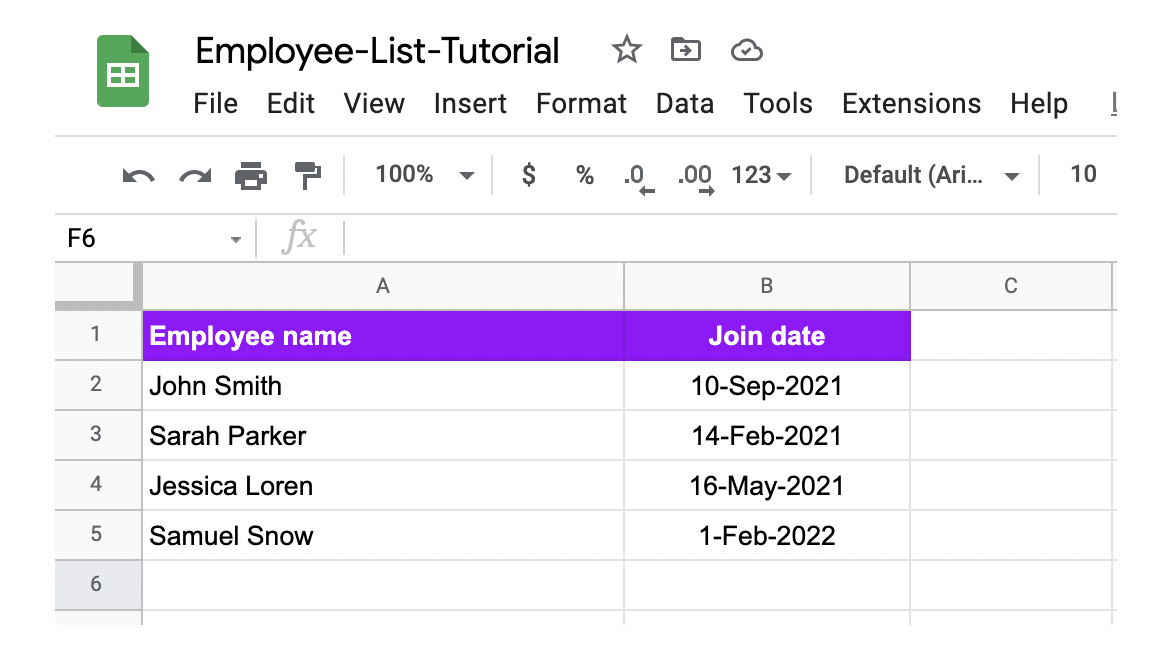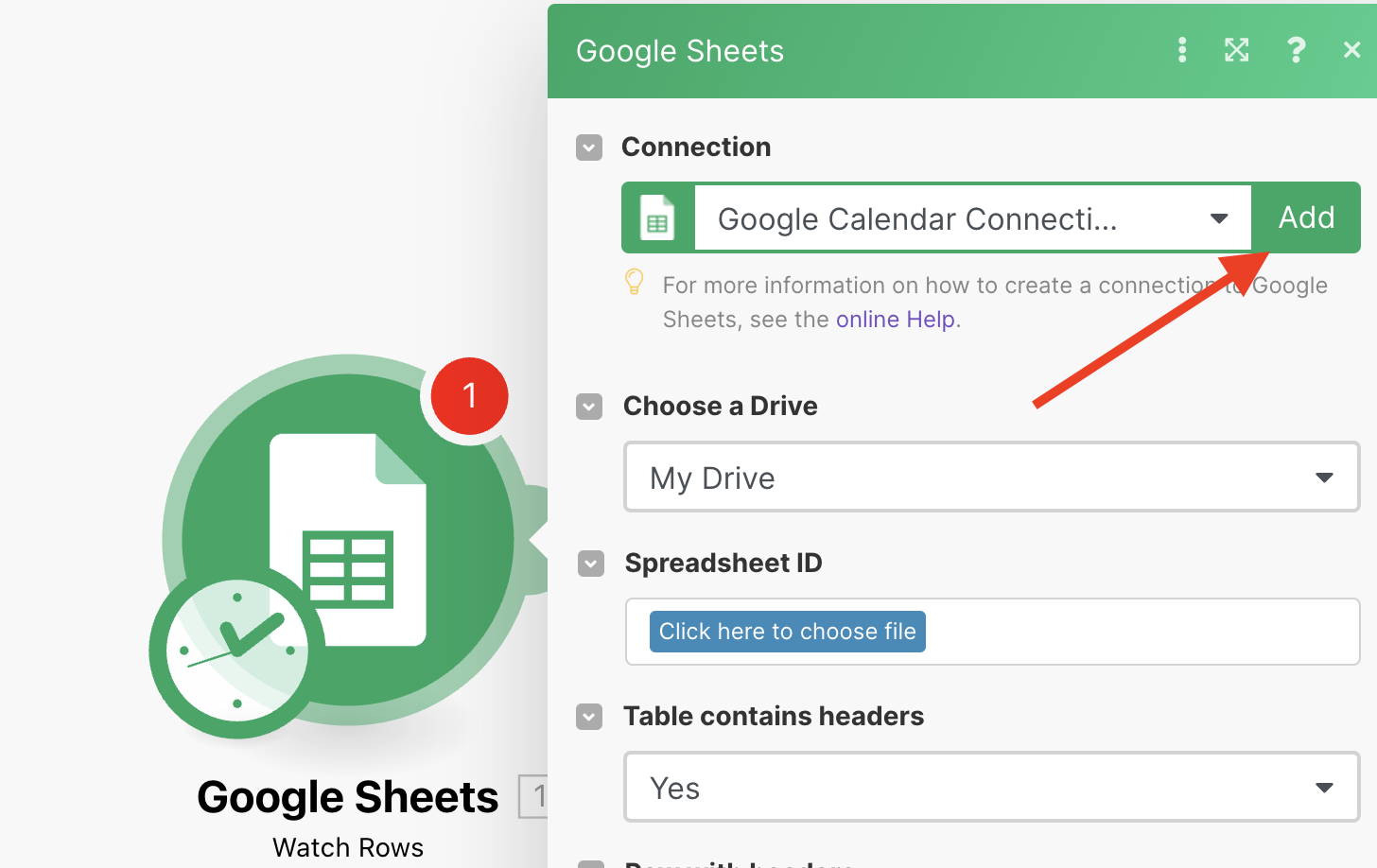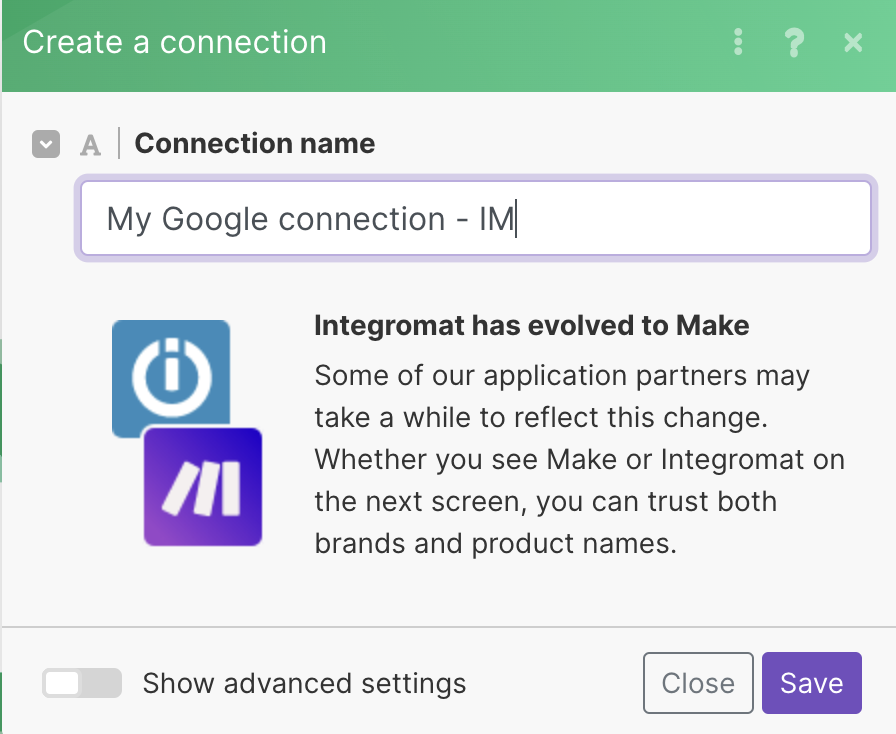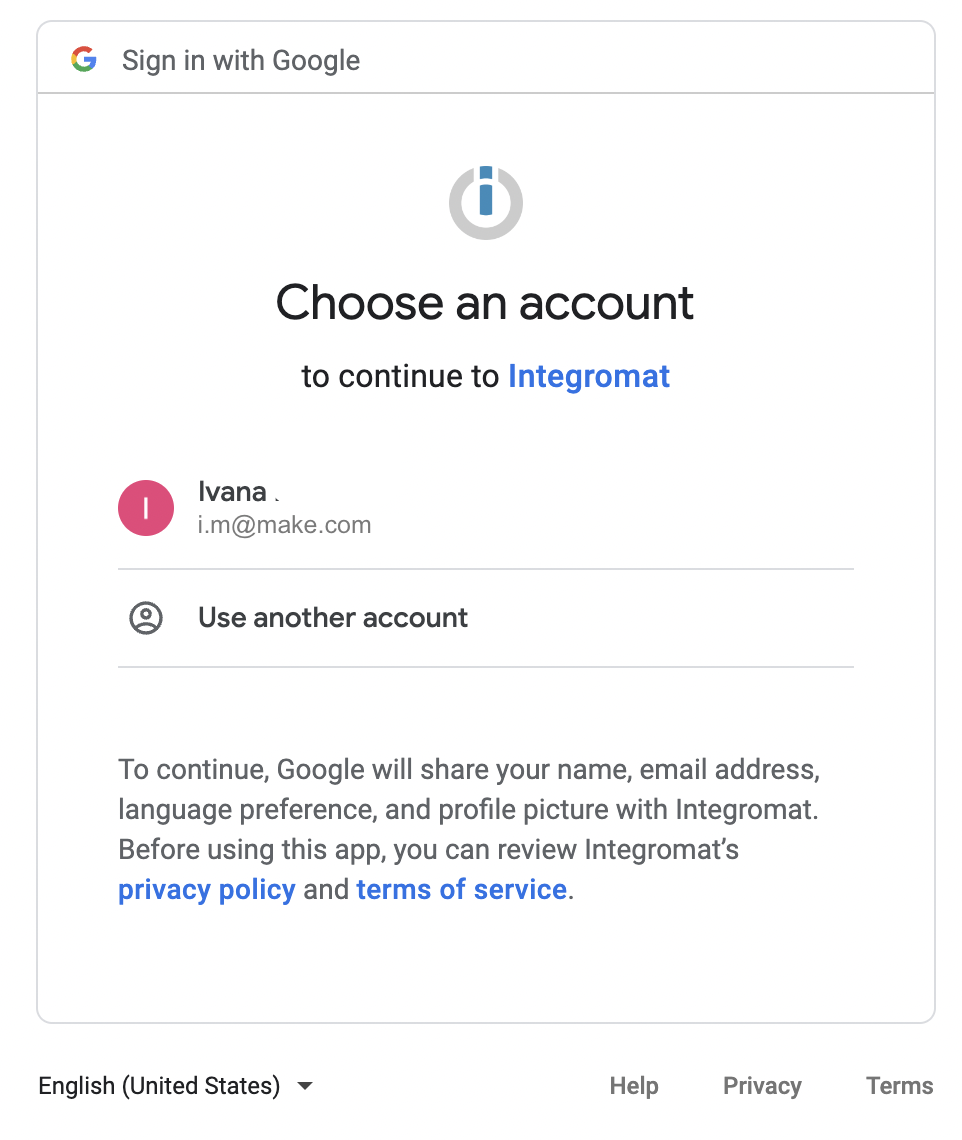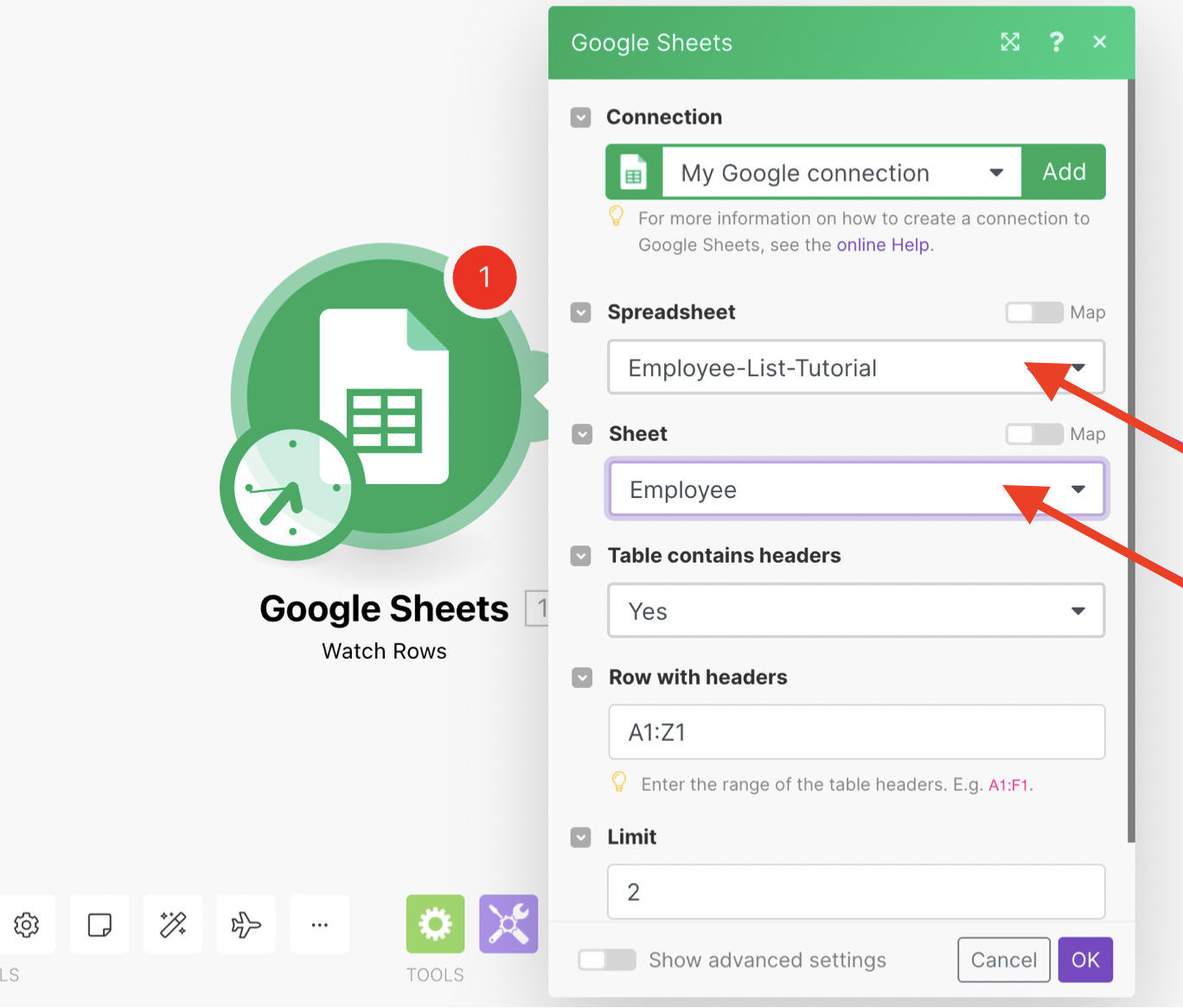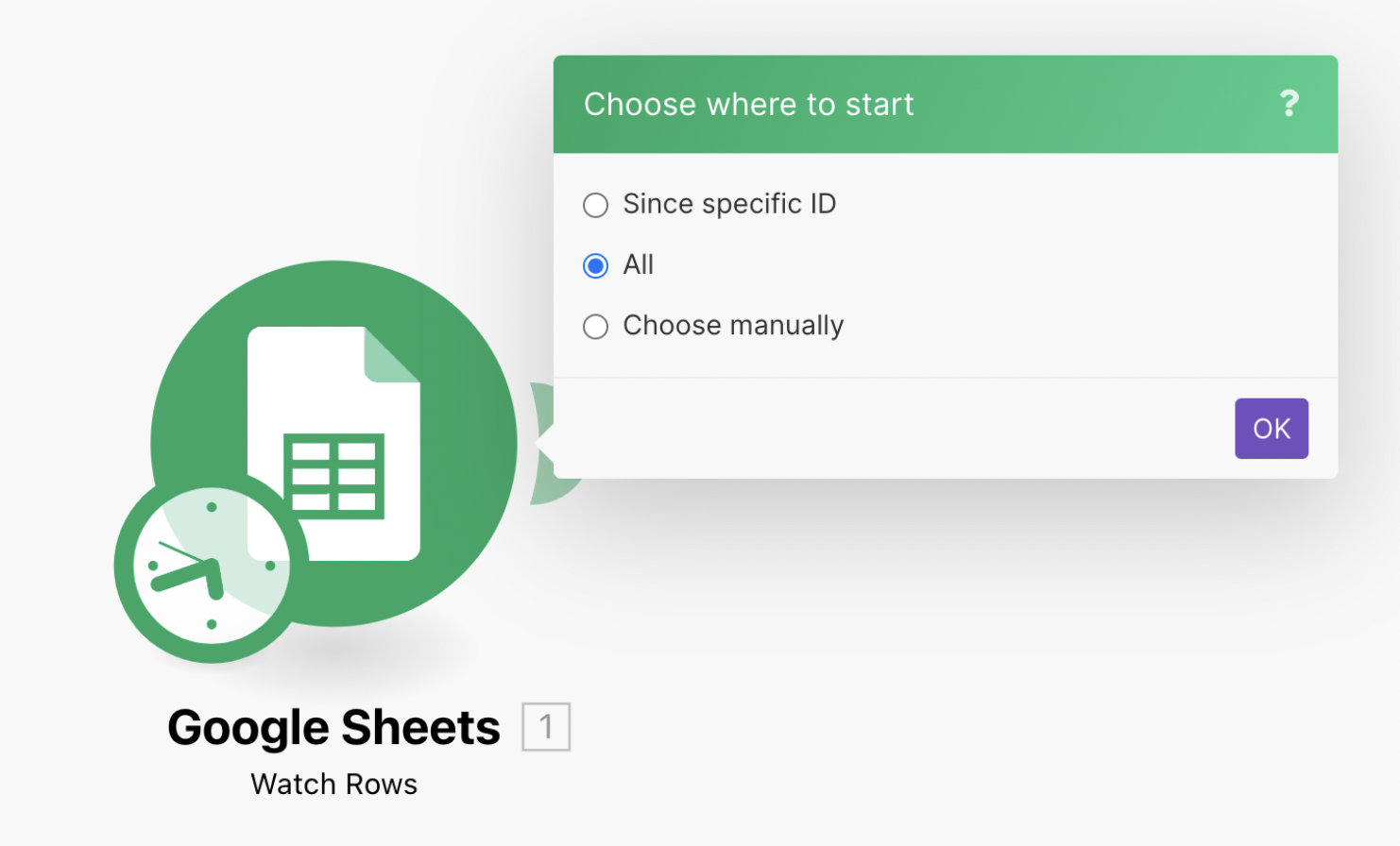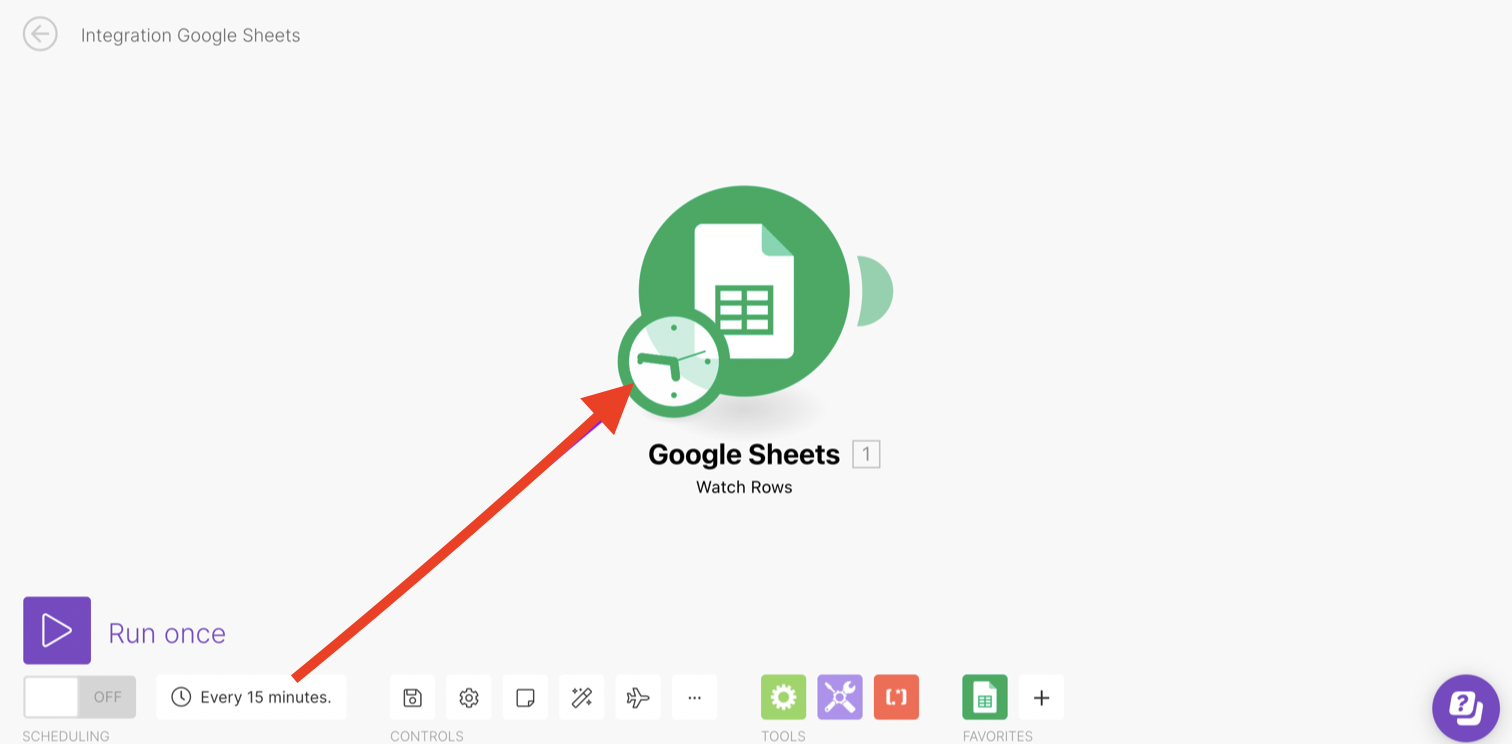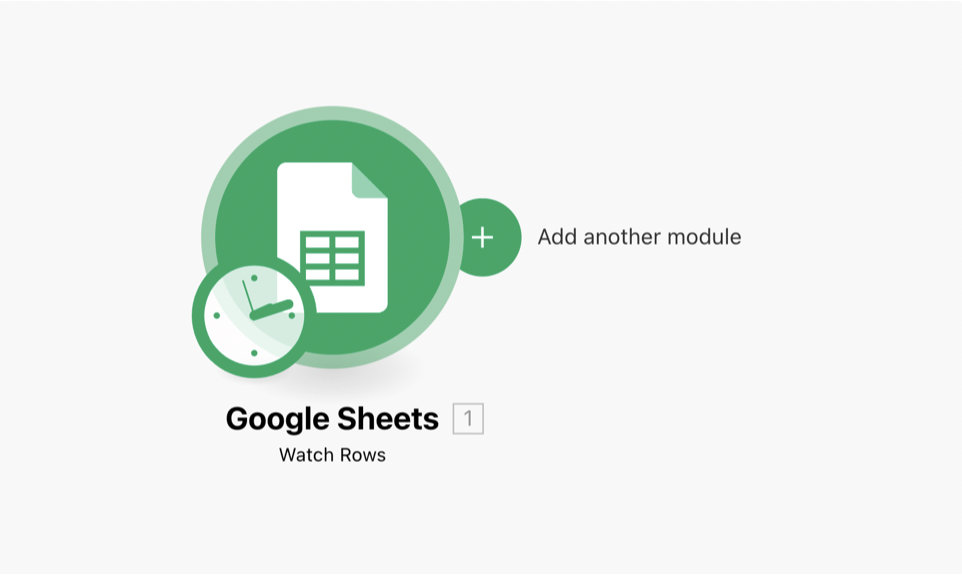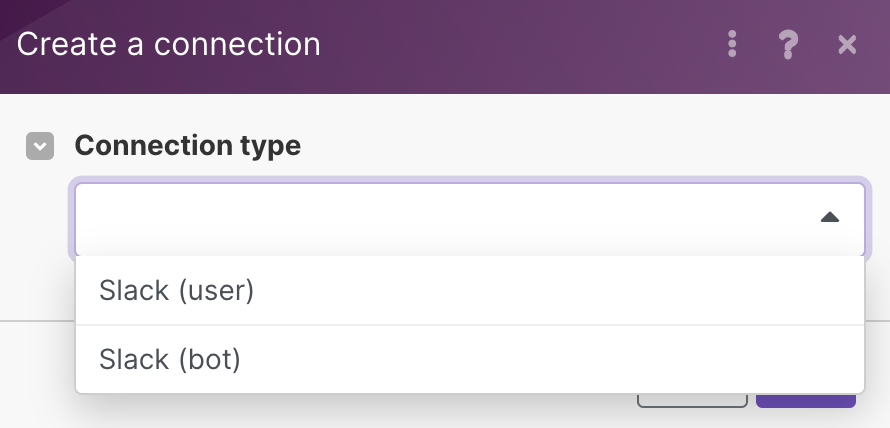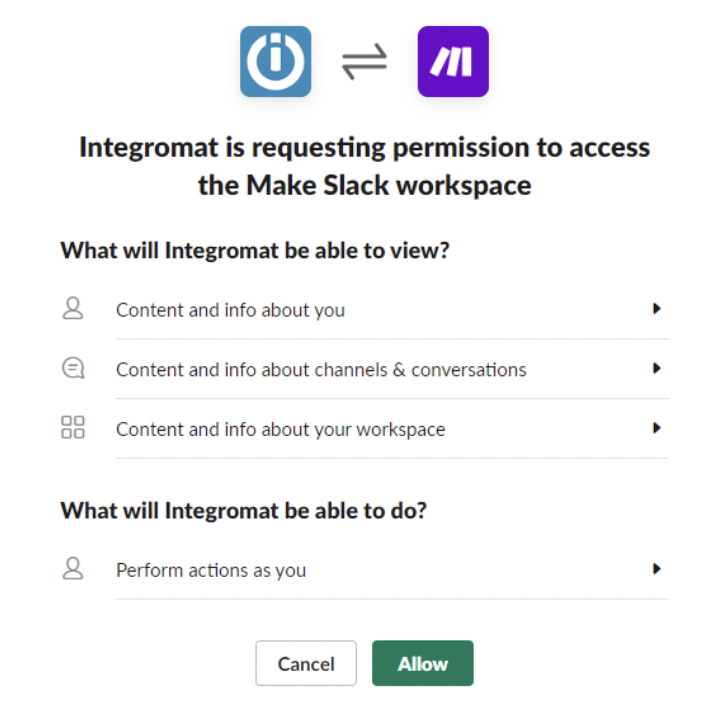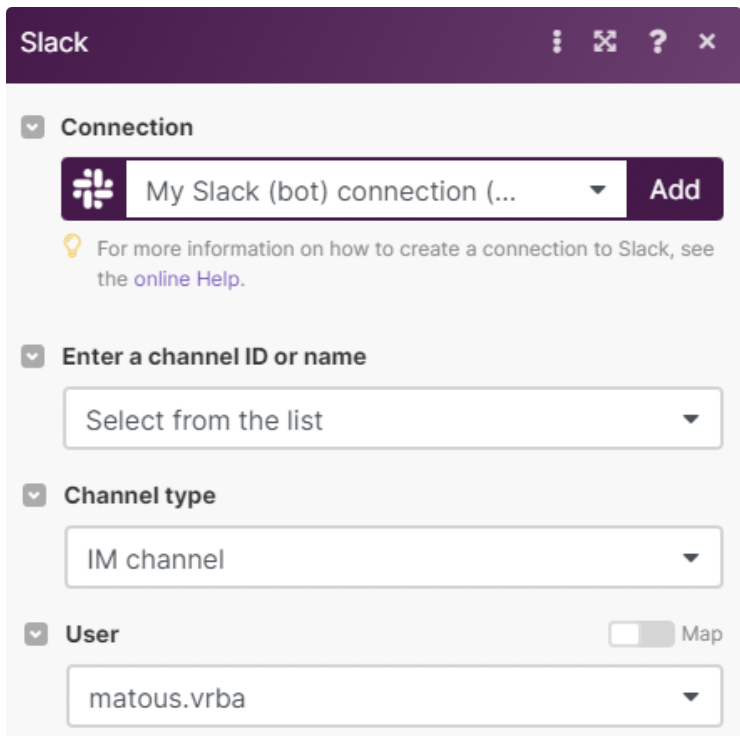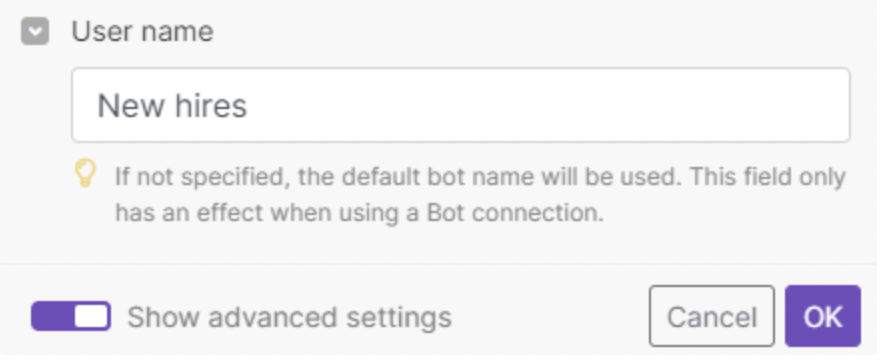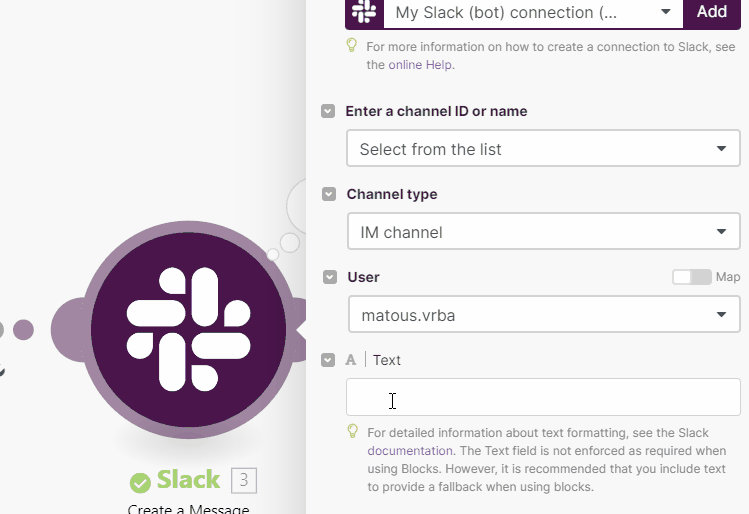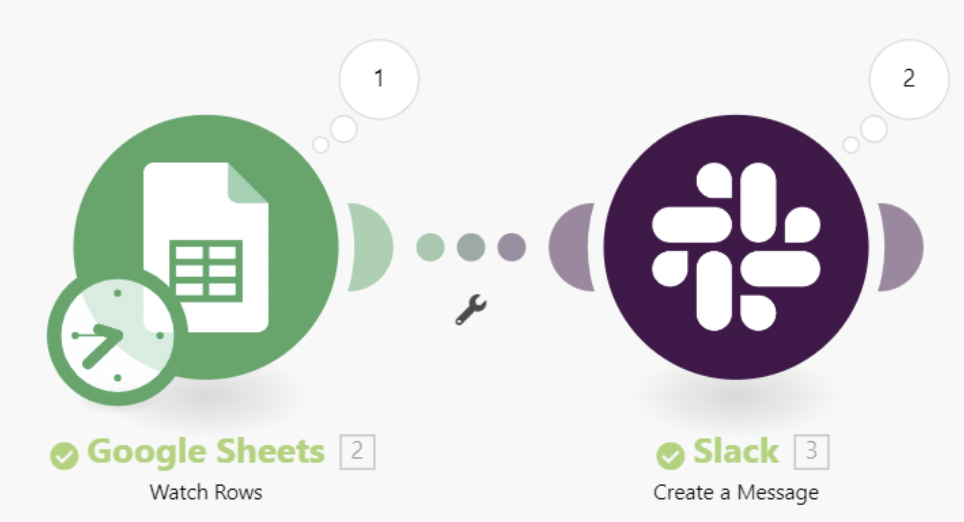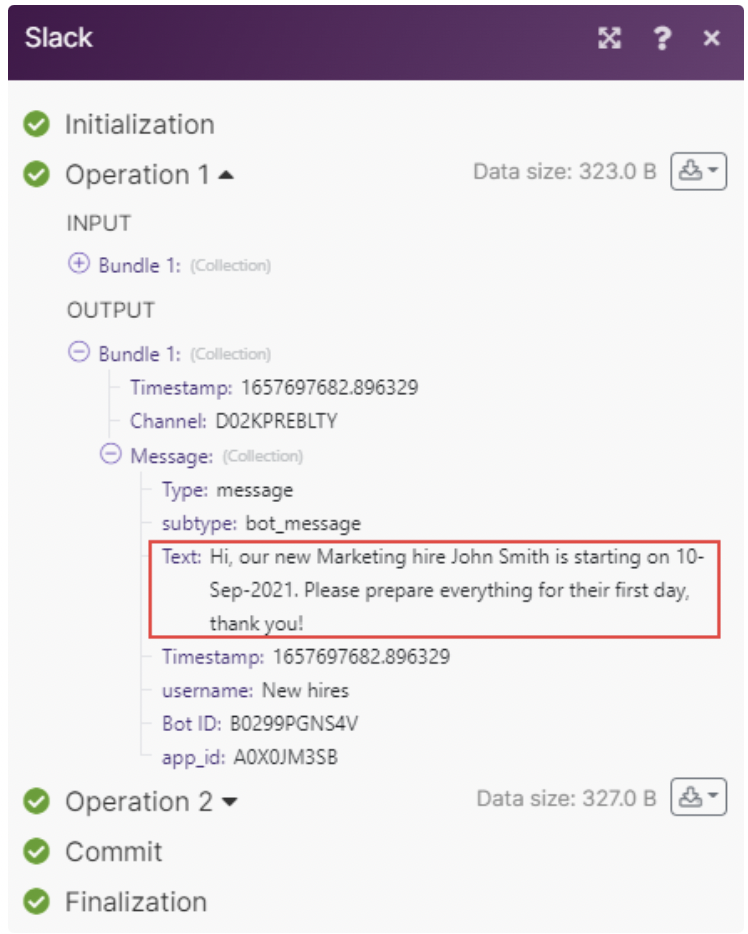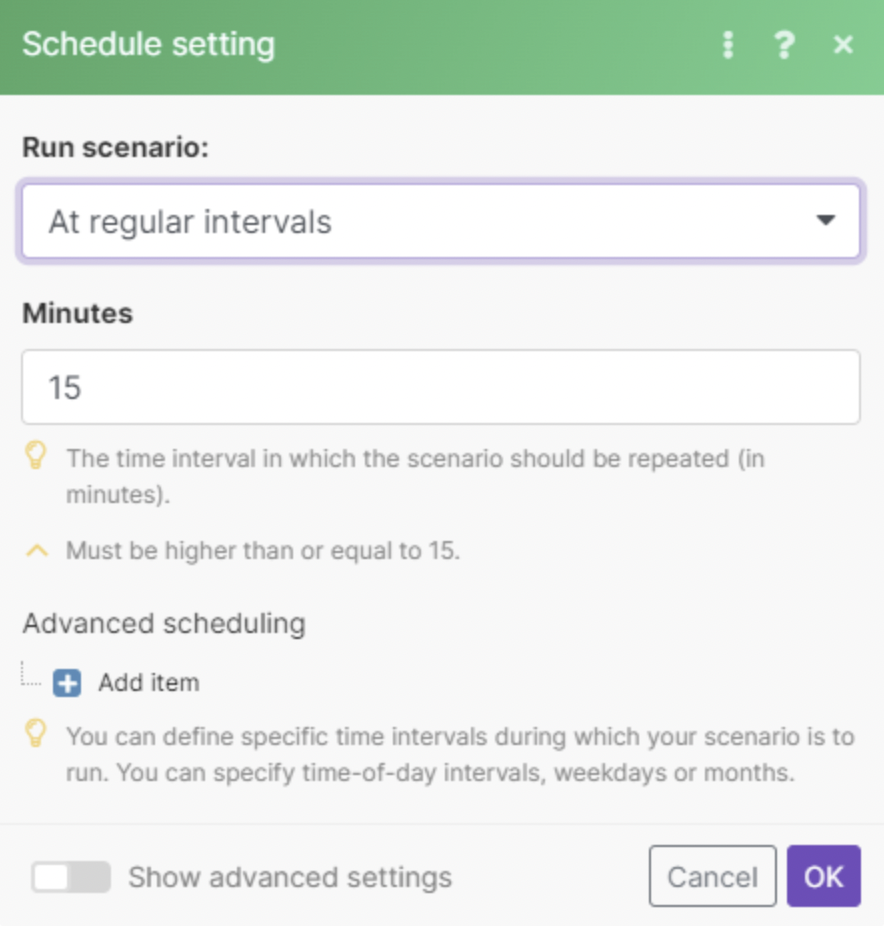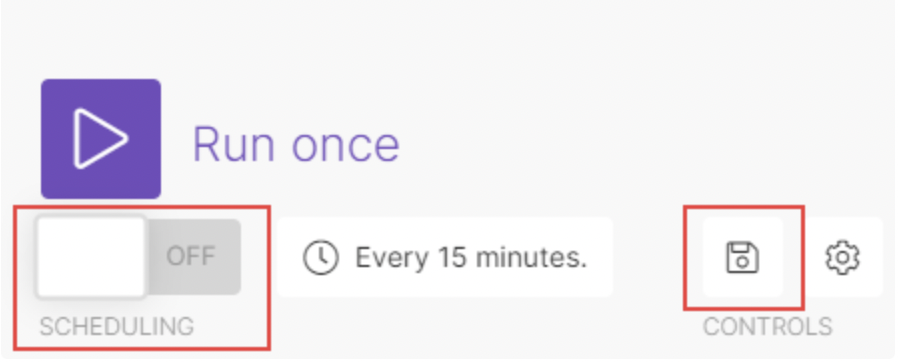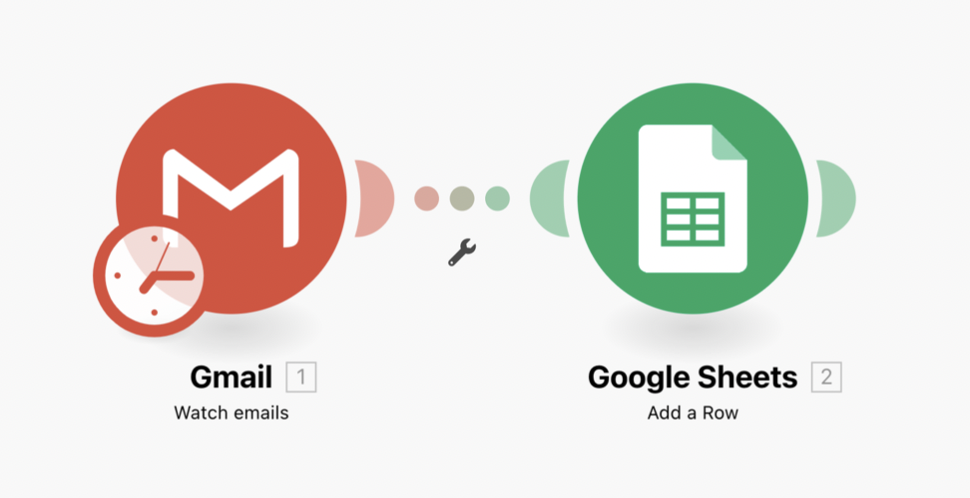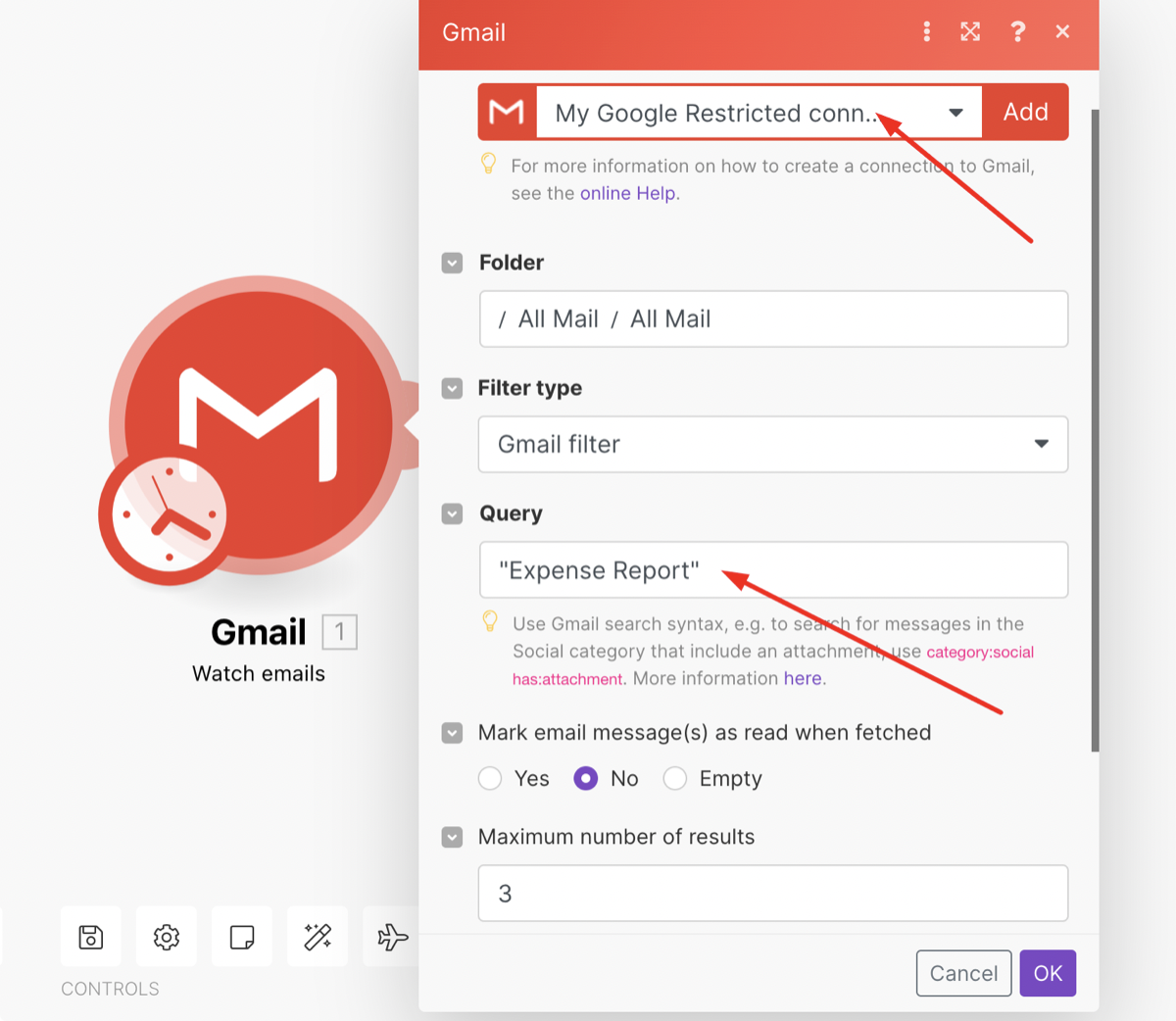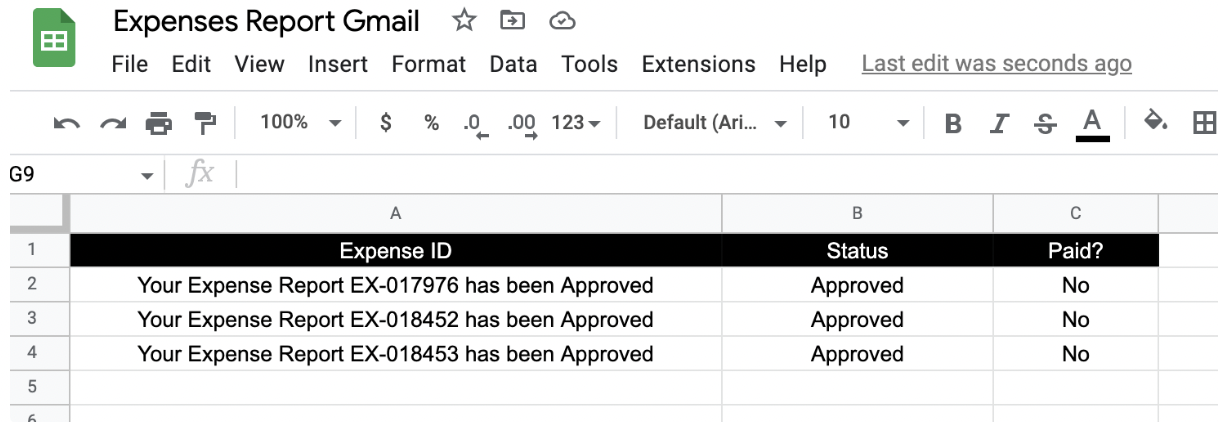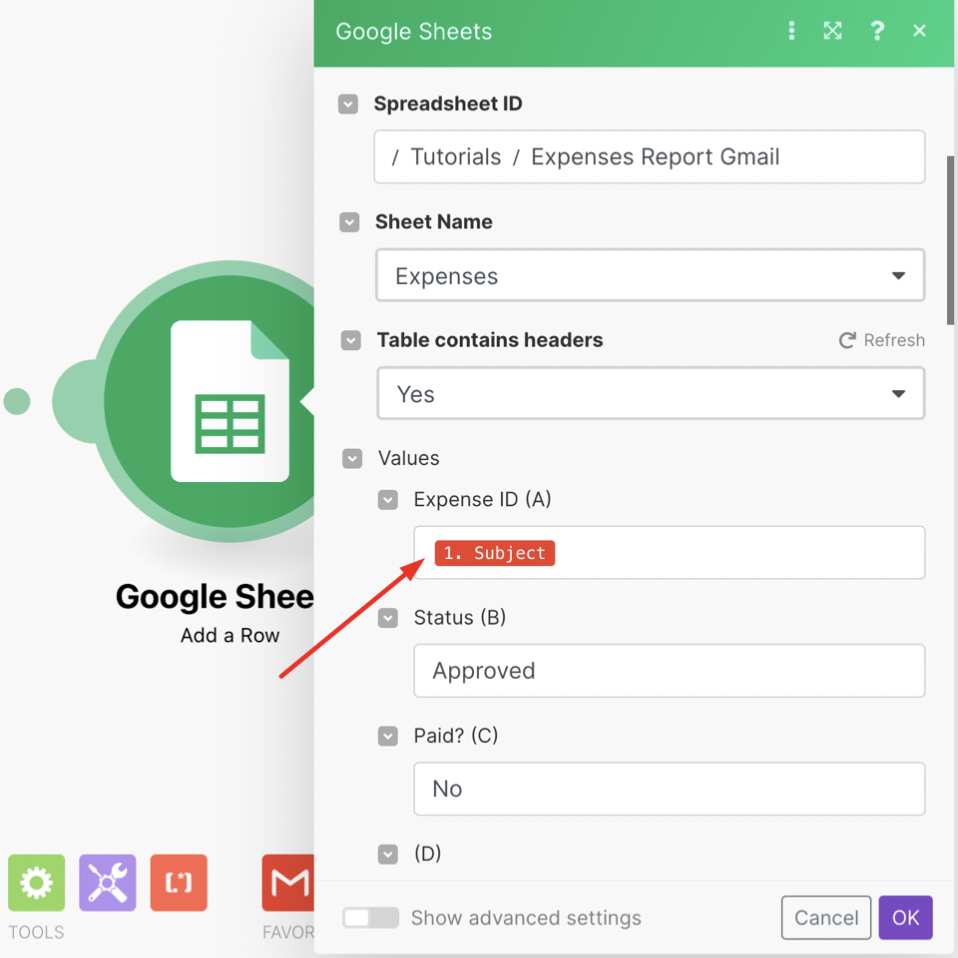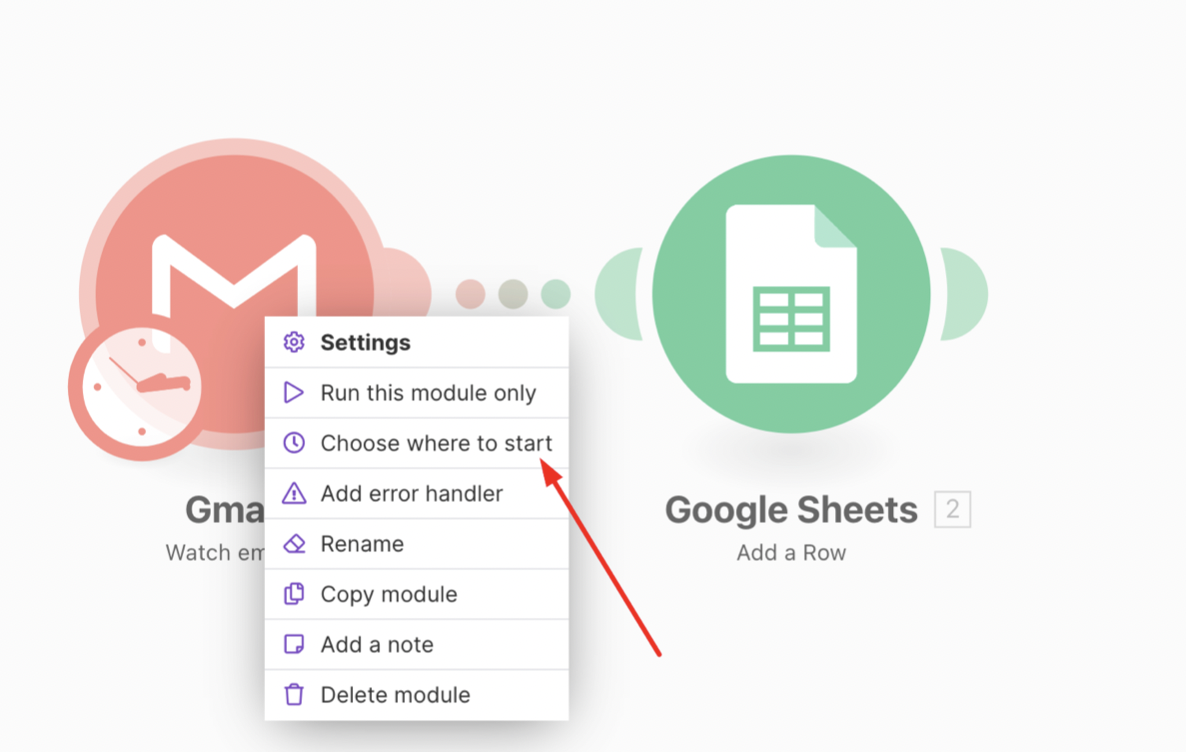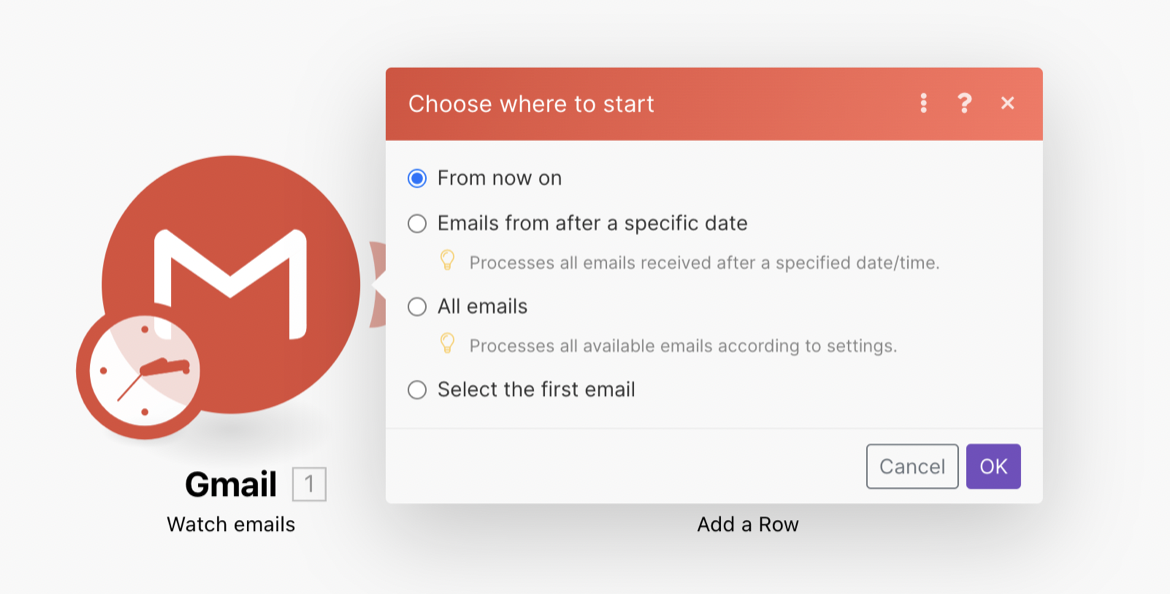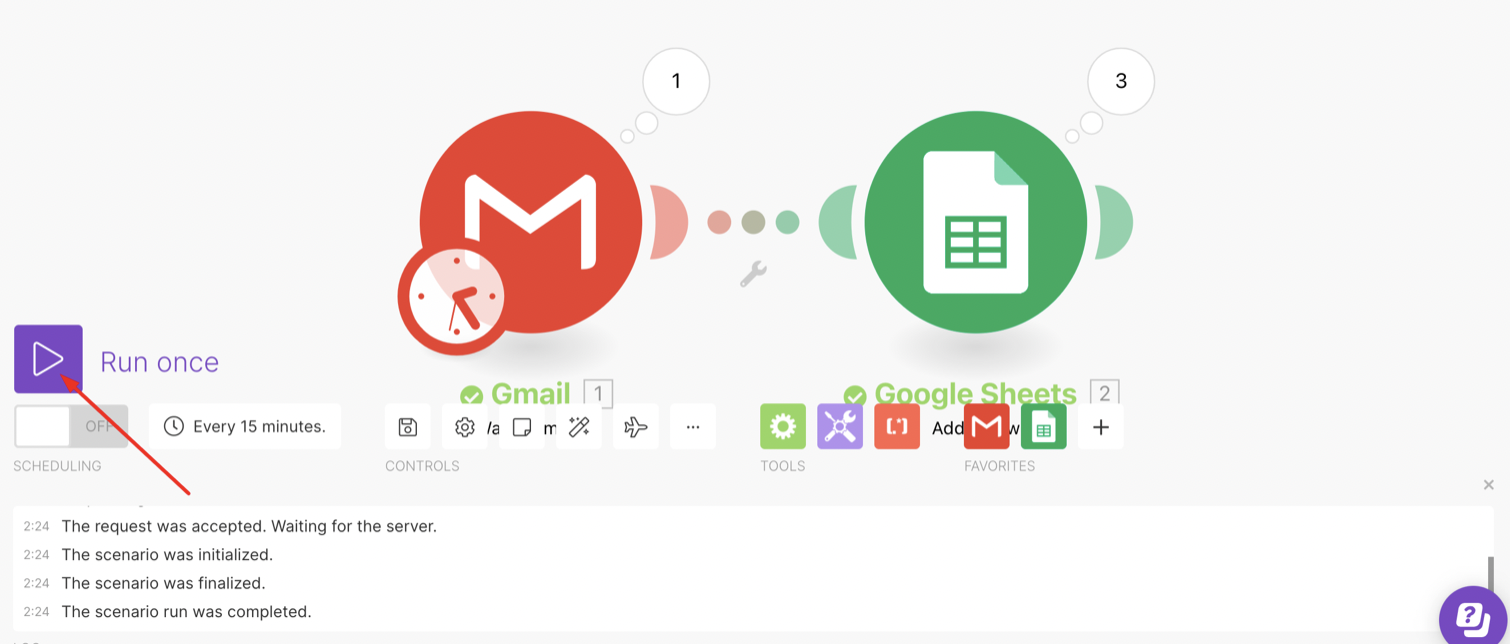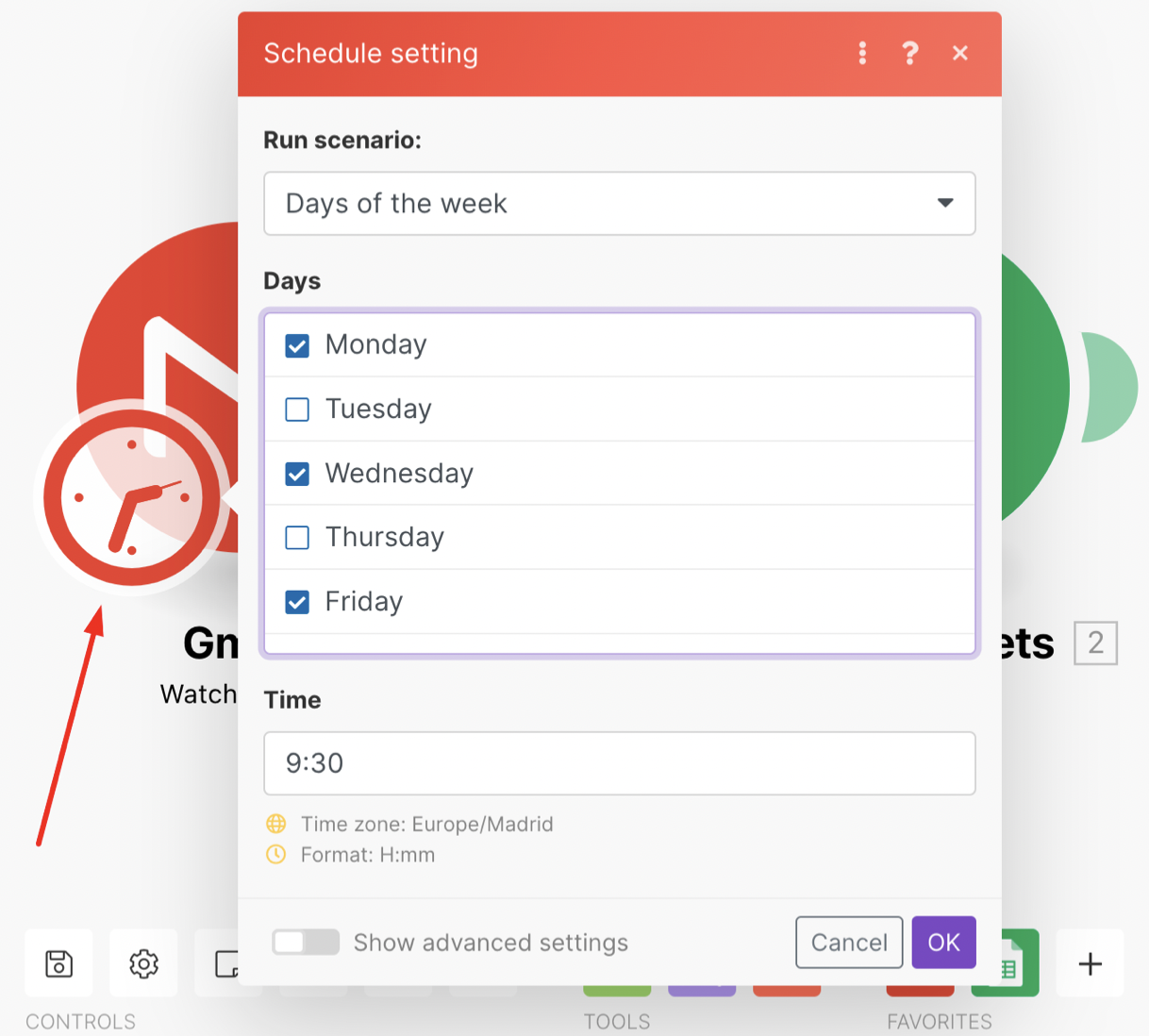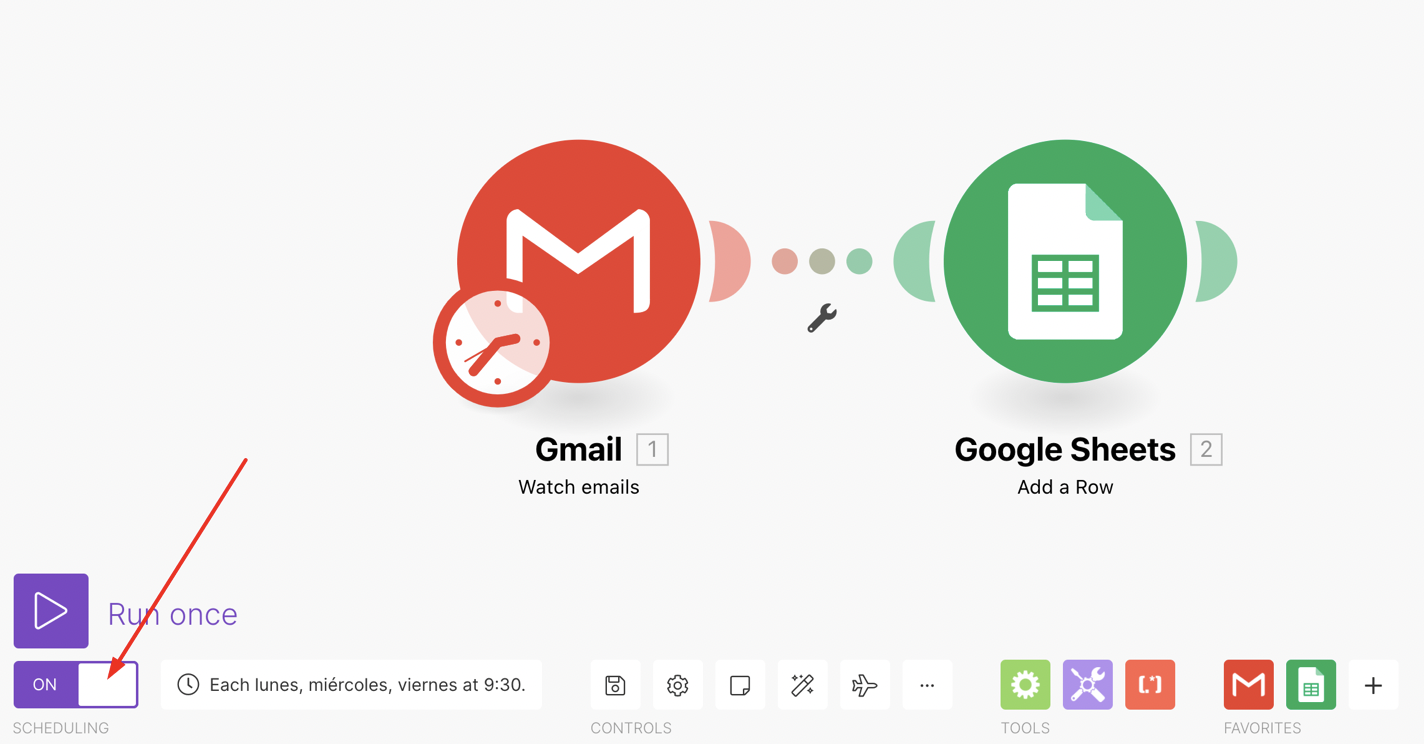- Using Google Sheets with Make
- Watch the video
- Use case 1: Trigger a workflow when a new row is added to a spreadsheet and send that data to another app
- Step 1 - Choose a trigger
- Step 2: Connect to Google Sheets
- Step 3: Configure the module
- Step 4: Choose where to start
- Step 5: Select the action module
- Step 6: Map data from Google Sheets
- Step 7: Test your scenario
- Step 8: Activate your scenario
- Use case 2: Get data from other apps and add it to Google Sheets as new rows
- Step 1: Choose Gmail as the trigger module
- Step 2: Map the variables from Gmail in the Google Sheets module
- Step 3: Choose where to start
- Step 4: Test the scenario
- Step 5: Define the scenario schedule
- Step 6: Activate the scenario
Google Sheets is one of the most popular apps Boost.spaceCentralization and synchronization platform, where you can organize and manage your data. More IntegratorPart of the Boost.space system, where you can create your connections and automate your processes. More customers use in their daily workflows.
This tutorial shows you how to connect your Google Sheets spreadsheets to Boost.space Integrator and build automated workflows (we call these scenariosA specific connection between applications in which data can be transferred. Two types of scenarios: active/inactive. More).
Spreadsheets have a wide range of usage in everyday adminAdmins in Boost.space have exclusive access to system settings. They manage the overall system setup, including appearance, language, currency, user settings, and the availability of individual modules to users and teams. More work – but sometimes they may fall short on certain capabilities – especially when you’re using spreadsheets to store data that can be actionable in some other apps or tools.
You can use Google Sheets in Boost.space Integrator scenarios to achieve the following basic use cases:
-
TriggerEvery scenario has a trigger, an event that starts your scenario. A scenario must have a trigger. There can only be one trigger for each scenario. When you create a new scenario, the first module you choose is your trigger for that scenario. Create a trigger by clicking on the empty module of a newly created scenario or moving the... a workflow when a new row is added to a spreadsheet and send that data to another app;
-
Get data from other apps and add it to Google Sheets as new rows.
The first step in any scenario is choosing what will start your scenario, which is called a trigger.
As you can see in the screenshot below, Google Sheets has 3 types of triggersEvery scenario has a trigger, an event that starts your scenario. A scenario must have a trigger. There can only be one trigger for each scenario. When you create a new scenario, the first module you choose is your trigger for that scenario. Create a trigger by clicking on the empty module of a newly created scenario or moving the...:
-
Watch Rows – Watches for newly added rows
-
Watch Changes – Watches changes of a specific cell (Google Sheets Add-on required)
-
Perform a FunctionFunctions you can use in Boost.space Integrator - create, update, delete, get, search. – Performs a Boost.space Integrator function and returns the data to the sheet (Google Sheets Add-on required)
In our example, we use Watch Rows because we want Boost.space Integrator to watch for new rows being added to our spreadsheet.
The sheet we use in this tutorial has these columns:
-
Employee name
-
Email
-
Starting date
-
Team
We want to perform an action each time a new employee is added to the spreadsheet. These actions can include informing your office managerCan manage members and space managers, view and manage items. Can modify space settings. More that a new employee is starting, assigning onboarding tasks to the new employee’s manager, etc.
If you already authenticated your connectionUnique, active service acces point to a network. There are different types of connections (API key, Oauth…). More inside Boost.space Integrator, the dropdown shows the previously connected account as an option.
If you are using Google Sheets on Boost.space Integrator for the first time, follow the steps below.
-
In Connection, click Add button to add a new connection. You need the connection to allow Boost.space Integrator to work with your spreadsheets.
A pop-up appears.
-
Enter your connection name.
In case you have several Google accounts, we recommend naming your connections differently so you can distinguish them.
You can also leave the connection name field as is.
-
Click Save.
A new window appears.
-
Select and click your Google account.
A new window appears.
-
Click Allow to allow Boost.space Integrator to access your Google account.
You added your connection. Your new connection appears under the Connection field.
In this step, we need to complete the fields required by the moduleThe module is an application or tool within the Boost.space system. The entire system is built on this concept of modularity. (module - Contacts) More.
-
Under Choose a Drive, select your drive.
-
In Spreadsheet ID, select your spreadsheet.
If your spreadsheet is located in the folder, first select the folder. Then, click the plus sign to select the specific spreadsheet in the folder.
-
In Sheet, select the sheet name.
-
Select whether your table contains headers. Our table contains headers, but yours doesn’t have to.
-
In Row with headers, enter the range of the table (headers included).
-
In Limit, enter the number of results you’d like to obtain. Whenever this workflow runs, it will return this number of results.
-
Click OK to save.
-
Choose where Boost.space Integrator should start looking for data to process.
For Google Sheets, you can choose:
-
Since specific ID – You have to provide a parameter.
-
All – We process all recordsOne row in the Boost.space database. These are individual rows under spaces in each module. For example single products, but not their variants. More found in the spreadsheet.
-
Choose manually – You can pick the one you’d like to process first.
We use All, which is useful when testing new scenarios.
-
-
Click OK to save.
Your Google Sheets trigger module is completed.
By default, Boost.space Integrator checks for new rows every 15 minutes and processes all the records created since the last time it checked. If you want to set a different schedule for your scenario, see step 6.
Depending on what you want to do next, select your next module. You can send the data from Google Sheets to any of our 1000+ apps.
We will add a Slack module which will send a new Slack message to the office manager letting them know a new employee is starting.
-
Hover over the right part of the Google Sheets module. The plus sign appears.
Click Add another module. An empty module appears.
-
Search for and click the module you want. In this case, select Slack > Create a message module.
-
If you already authenticated your Slack connection inside Boost.space Integrator, the dropdown shows the previously connected account as an option.
If you are using Slack on Boost.space Integrator for the first time, you need to follow the instructions below to add and authorize the Slack connection.
In Connection, click Add.
A pop-up appears.
Enter your connection name and click Save.
-
A new window appears. Sign in to your Slack.
-
Click Allow to authorize Boost.space Integrator to access Slack.
-
Select if you want to enter a channel ID or name manually or choose from the list.
-
Enter or select a channel you want to send the message to.
It can be a public channel, a private channel, or an IM channel.
To select a user, use the IM channel option and then select a user name. You can first try sending the message to yourself.
-
(Optional step)
If you chose the Bot option, you can define a custom bot name in the Advanced settings of this module.
MappingMapping links the modules in your scenario. When you map an item, you connected the data retrieved by one module to another module to perform the desired action. For example, you can map the email address and subject lines from the Email > Watch emails module to Google Sheets > Add a row and create a spreadsheet of email addresses... means telling Boost.space Integrator how it should move data from one app to another.
We want to compose a Slack message with the details of the new hire.
-
Click the Text field.
The mapping dialog opens.
-
Select data from the spreadsheet you want to use in the Slack message.
-
Click the variables from the spreadsheet (they will have the same color as the module) to add them to the message text.
For example:
Hi, our new [Team] hire [Employee name] is starting on [Starting date]. Please prepare everything for their first day, thank you!
will produce this as a result:
Hi, our new Marketing hire Sarah is starting on 14-Jul-2022. Please prepare everything for their first day, thank you!
-
Confirm OK to save the settings.
To verify that everything works as expected, test your scenario by clicking the Run once button.
If your scenario runs successfully, green checkmarks appear under the modulesThe module is an application or tool within the Boost.space system. The entire system is built on this concept of modularity. (module - Contacts) More. Also, the messages(s) are delivered on Slack.
The modules should also have bubbles above them indicating how many operationsAn operation is a task performed by module. More the scenario used. Every time an app performs an action such as reading or writing data, it consumes an operationAn operation is a task performed by module. More. Learn more about operations.
Click the bubble above the module to see the details of what the module just processed. The Google Sheets module in the screenshot below shows that it processed two rows of data (bundleA bundle is a chunk of data and the basic unit for use with modules. A bundle consists of items, similar to how a bag may contain separate, individual items. More 1 and bundle 2).
The Slack module shows that it sent 2 messages. Each message contains data from one of the rows from Google Sheets.
If the scenario works as expected, you can activate it to make it run on a schedule.
-
Click the Schedule button or the clock icon next to the Google Sheets module.
-
Choose how often the scenario should run. The default is every 15 minutes.
-
Activate the scenario using the SchedulingBoost.space Integrator allows you to define when and how often an active scenario runs. Use the Schedule setting panel under the Options tab and choose Scheduling to set your preferred schedule. More switch.
-
Save the scenario.
That is it! You now have a working scenario that does a repetitive task for you!
This use case has 2 app modules – Gmail and Google Sheets. The Gmail module looks for new emails and filters those that have “Expense Report” in their subject line. Then, the Google Sheets module adds matching emails as new rows in a spreadsheet, where we can track if an expense report was paid or not.
Select the Gmail app and choose the trigger Watch Emails from the list. Then proceed as follows:
-
Connect your Google Account if you haven’t done so before.
Note: If you are using a personal Gmail account, there are some extra connection steps required for using Gmail and Google Drive apps. Learn more.
-
Select the folder to monitor in your inbox.
-
Choose Gmail filter as the filter type.
-
Add the keyword to use for filtering in the “Query” field.
We want Gmail to return only emails with “Expense Report” phrase in the subject line. So we enter “Expense report” in the “Query” field.
You can enter any other words or phrases you want Gmail to filter. For example “Invoice”, “Demo request”, etc.
-
Select whether you want Boost.space Integrator to mark the emails as read or unread when fetched.
-
Select the maximum number of results you’d like to return per execution (one run of the scenario).
The process of mapping consists of using data from the previous module and adding it to subsequent modules in your scenario. In this example, our spreadsheet for tracking expenses looks like this:
We have these columns in our spreadsheet:
Note that the subject variable is highlighted in red, which indicates that the value will come from the Gmail module. The other fields are typed in manually, so they will always be Status = Approved and Paid = No.
Now that your modules are set up, pick the starting point in your inbox – where Make should start looking for data. Right-click the Gmail module and select Choose where to start.
-
From now on: The module processes only new incoming emails that come in after you activate your scenario.
-
Emails from after a specific date: You can select a date from which the emails will be processed.
-
All emails: It will go through your entire inbox (but grab only 3 records, which is what we defined in Step 1).
-
Select the first email: You can manually select the email you’d like to process. Usually, this is useful for testing purposes.
When building and testing scenarios, select All emails to ensure you have data coming in. Once you are finished with the setup, you can choose From now on to only process new incoming emails.
The next step is to run the scenario at least once to see its outcome. Click the Run once button to test your scenario.
If the scenario runs successfully, green checkmarks appear under the modules. You should also see new rows added in your spreadsheet.
Click the numbers above the modules to see the details of how the data was processed and the output of the scenario.
The number 3 in the bubble means that the Google Sheets module has consumed 3 operations, one for each email that it has found and processed. In our case for operation 1, 1 row was updated, 3 columns and 3 cells.
Define how often the scenario should run.
By default, a scenario runs every 15 minutes. With the schedule settings, you can customize the run schedule of your scenario. You can choose the interval, pick a specific date and time, or other options. Learn more about scheduling.
-
Click on the clock icon next to the trigger module, or the Schedule setting button in the bottom toolbar.
-
Select how often you want your scenario to run.
-
Click OK to save your settings.
Now it’s time to activate your scenario and let it run according to the conditions you specified in the previous steps.
-
Click on the scheduling button to activate your scenario.
-
Click the save icon to save your scenario.
Here are a few more examples with links to our templatesTemplates are predefined scenarios that you can expand and customize to create new scenarios. You can then share these with friends and colleagues. More:

